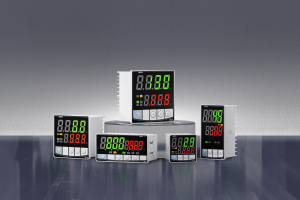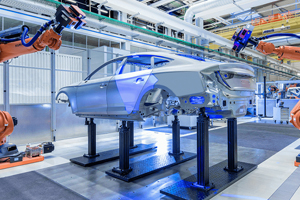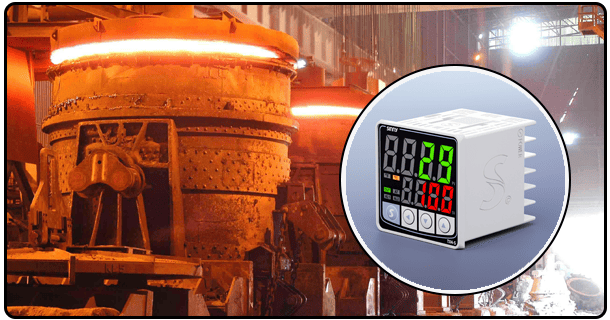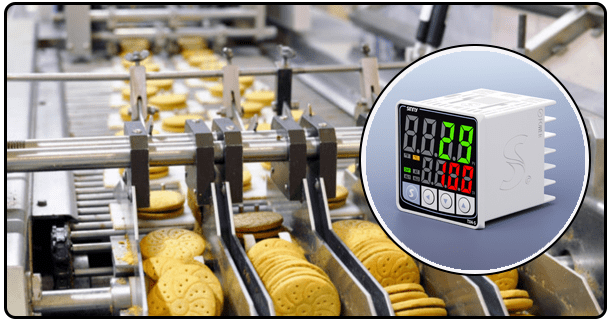A Guide to Reducing Overshoot on PID Controls
I. Introduction to Overshoot and PID Control
Modern industrial processes, technological applications and automation systems are based on control and automation systems. These systems enable the management and regulation with precision of dynamic systems. The systems can range from microelectronics within consumer products to massive operations in manufacturing plants or critical infrastructure. At the heart of many successful control strategies lies the Proportional-Integral-Derivative, commonly known as PID, controller. The PID controller's primary purpose is to measure the process variable, or PV (the current measurement), and compare it to a setpoint value (SP), the desired target. It then adjusts the input of the system to reduce the difference (known as error). Although PID controllers can be highly efficient in reaching this goal, they are not always optimal. Overshoot is a common problem. When the process variable exceeds its desired setpoint for a short time before settling, it is called overshoot. Overshoot can be undesirable, even if it is sometimes inevitable. This can cause instability and mechanical damage. It also slows down the process. Understanding the causes of the overshoot, and the techniques that can be used to minimize it are crucial in order to achieve optimal performance for PID applications. This guide will explore the causes of PID Overshoot and provide a variety of strategies and methods to reduce this undesirable phenomenon.
II. Why does overshoot occur in PID control?
The interplay of the gains Kp, Ki and Kd (controller's gains) determines the behaviour of the PID-controlled system. The PID algorithm is composed of many terms, each with its own contribution. Improper tuning may lead to overshoot and instability.
PID responses are built on the Proportional term (P). The output is proportional to current error. If the error is high, it makes sense that the proportional terms will push the system to make corrections faster. Higher Proportional Gains (Kp), which result in stronger responses, can help reduce the error quickly. This rapid correction, however, can be problematic. A high Kp can cause the process variable to exceed the set point if the system has an inertia inherent or significant damping. Overshoot is caused by this inherent characteristic.
This term (D) adds an additional layer of anticipatory information. The derivative (D) term calculates the rate at which the error changes and produces an output in opposition to this rate. Imagine it is a force applied to try and prevent the variable in the process from rapidly changing directions. The opposing force is like a damper. By preventing the system from overshooting the setpoint, a properly-tuned D term will significantly reduce overshoot. The D term smoothens response and helps the system to settle down more gently. The D-term is very sensitive to noise. The D-term can increase noise if the sensor signals contain rapid fluctuations. This could lead to unreliable corrections, such as instability or overshoot. The sensitivity of the control system is crucial and must be tuned carefully.
Integral (I), on the other hand, addresses another aspect of error. The integral term calculates cumulative error. The integral term will increase the output of the controller if the error continues, no matter how small. This pushes the system to work harder, until it is corrected. It is the primary objective of the I-term to remove steady state error and ensure that the process variable reaches its setpoint. The I term, while highly advantageous, can indirectly contribute to overshoot. The integral term, by adding significant driving forces, can overshoot setpoints, particularly if system dynamics prevent the P or D terms from counteracting the integral actions quickly enough. It is more about the accumulation of driving forces over time. However, it can also interact with D and P terms and cause oscillations or overshoot, if Ki becomes too high, or if system dynamics is not understood.
The inherent characteristics of the control process heavily influence the behaviour of the PID. This includes overshoot. The order of the system (i.e. first-order or second-order), its natural frequency and damping ratio are all important factors. Overshoot is more likely to occur in a system that has low damping and a high natural frequency. It is important to understand these dynamics for effective tuning. Reduce overshoot by carefully balancing the PID gains if the process has low damping or is oscillatory.
III. Focus on the primary tuning methods to reduce overshoot
Overshoot can be addressed directly by tuning PID gains, namely Proportional(Kp), Integral(Ki) and Derivative(Kd). These parameters are adjusted to strike a balance among responsiveness, stability, and damping. In order to reduce overshoot, Kp and Ki are usually adjusted first. Ki is then tuned primarily in order to eliminate the steady state error after the system has become reasonably stable.
Often, the first thing to do is adjust the Proportional Gain. Reduced Kp will slow down system response. The system can settle down more slowly by slowing it down. This reduces the energy which could lead to an overshoot. This comes with a price. Slower response time means that the system will take longer to reach its setpoint. Furthermore, reducing Kp might not eliminate steady-state error entirely. The Integral gain (Ki), which is the difference between the process variable and setpoint value, comes into play with this error. Decreased Kp reduces P's influence and often requires careful Ki tuning. Reduced Kp may help to dampen response and to reduce overshoot. However, this is not enough to stop the error. It is important to manage the trade-off.
The derivative (Kd), which is a key component in the reduction of overshoot, plays an important role. The dampening effect of increasing Kd is increased. D anticipates errors in the future based on how fast the error changes. The D-term generates a change that is opposed to the rapid increase in error (which can often be accompanied by overshoot). Imagine it like a force applied to the system that prevents its tendency to overshoot. The opposing force dampens oscillations, smoothing out the response. D-terms reduce overshoot by primarily reducing oscillations. However, tuning Kd requires careful consideration. Increased Kd improves the stability of the vehicle and decreases overshoot. However, too much D-action can cause other issues. Kd values that are too high can cause sensor noise to be amplified, resulting in erratic behavior. Filtering of the sensor signal can be necessary because D is sensitive to noise at high frequencies. D reacts rapidly to errors. The sensitivity of this term is a combination of a strength and weakness. The D-term calculates the rate at which the error changes. The D-term will produce a large output signal if the error changes rapidly. The output signal helps to minimize overshoot by opposing the error change. If the error direction changes frequently, however, the D-term will produce large outputs to the contrary, which could lead to oscillations and instability. It is an important drawback. To avoid this, tuning Kd is a delicate process. D is very sensitive to noise at high frequencies. The D term will amplify noise if the sensor signals contain rapid fluctuations. This can lead to unreliable control. The D-term calculates how fast the error is changing. The D term generates a large output signal if the error increases rapidly. The output signal helps to minimize overshoot by opposing the error change. If the error direction changes frequently, however, the D-term will produce large outputs to the contrary, which could lead to oscillations and instability. It is an important drawback. Tuning Kd requires careful adjustment. D is very sensitive to noise at high frequencies. The D term will amplify noise if the sensor signals contain rapid fluctuations. This can lead to unreliable control. It is sometimes necessary to filter the sensor signal. D-term calculates rate of error change. The D term generates a large output signal if the error increases rapidly. The output signal helps to minimize overshoot by opposing the error change. If the error direction changes frequently, however, the D-term will produce large outputs to the contrary, which could lead to oscillations and instability. It is an important drawback. Tuning Kd requires careful adjustment. D is very sensitive to noise at high frequencies. The D term will amplify noise if the sensor signals contain rapid fluctuations. This can lead to unreliable control. Often, filtering of the sensor signal becomes necessary. D-term calculates rate of error change. The D term generates a large output signal if the error increases rapidly. The output signal helps to minimize overshoot by opposing the error change. If the error direction changes frequently, however, the D-term will produce large outputs to the contrary, which could lead to oscillations and instability. It is an important drawback. Tuning Kd requires careful adjustment. D is very sensitive to noise at high frequencies. The D term will amplify noise if the sensor signals contain rapid fluctuations. This can lead to unreliable control. Filtering of the sensor signal can be necessary. D-term calculates rate of error change. The D term generates a large output signal if the error increases rapidly. The output signal helps to minimize overshoot by opposing the error change.
- A Guide to Tuning PID loops for Temperature Control
- The Proportional-Integral-Derivative (PID) Controller: A Comprehensive Overview























